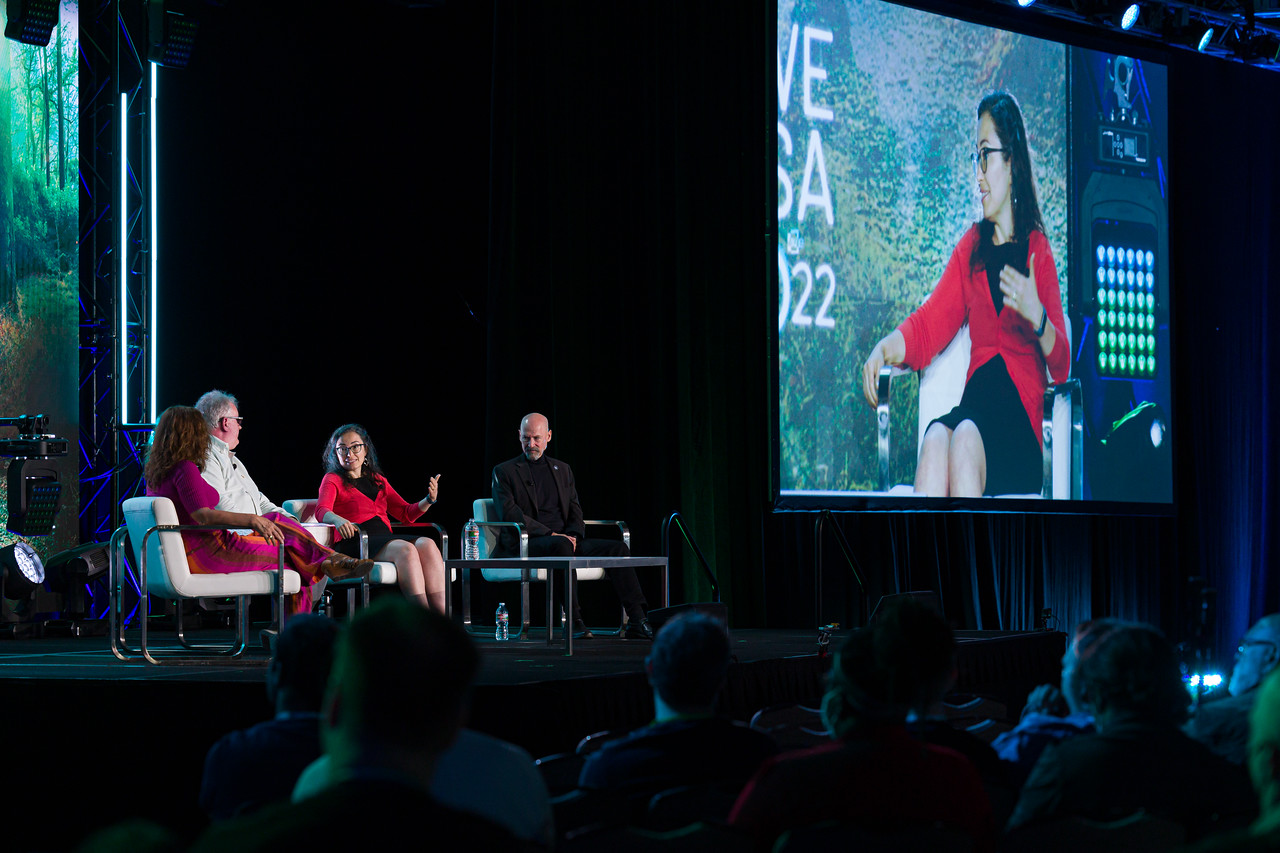Welcome back to AWE Talks, our series that revisits the most engaging content from AWE’s catalog of conference sessions. With an extensive library from AWE USA 2022, there's still plenty to dive into.
This week, we focus on open standards for the metaverse. At this key inflection point for the web, can we ensure that the virtues of open-source software and open systems live on in 3D worlds?See the summarized takeaways below, along with the full session video. Stay tuned for more video highlights each week and check out the full library on awe.live and AWE’s YouTube Channel.
Speakers:
David Morin - Industry Relations at Epic Games - Unreal Engine
Aysegul Yonet - Software Engineer at Microsoft - Mixed Reality
Neil Trevett - President at Khronos Group
Suzan Oslin - Experience Director at UXXR Design
– The web has developed key standards of openness, such as the open-source movement.
– In fact, much of the web was built on open-source software, such as OpenGL and WebGL.
– This has allowed software to scale in a meritocracy through the wisdom of the crowds.
– Can that same paradigm apply... or carry over... to the age of 3D, a.k.a the metaverse?
– The need for open standards and their practical benefits could be even greater in 3D.
– That’s simply because the metaverse stack will be complex and technically advanced.
– We’ll need APIs as the glue for hardware, software, silicon, and 3D authoring engines
– Building on the work of others with common foundations will accelerate such integrations.
– In fact, open source’s inherent mechanics are an effective engine to achieve scale.
– The Khronos group leads this charge with the OpenXR and WebXR standards.
– Other groups like the Open AR Cloud have parallel and complimentary missions.
– For example, the Geopose standard could emerge as the URL of geospatial AR.
– But to incentivize companies to adopt open standards, it’s not just about altruism.
– Rather, open source has business advantages in optimal engineering deployment.
– For example, companies don’t have to reinvent the wheel for foundational or basic code.
– Instead, they can protect proprietary aspects of software while tapping into common code.
– And standards like OpenXR mean developers don’t have to port their software so much.
– This type of ROI and incentive speaks loudest when enticing enterprises to adopt.
For more color from the panel, check out the full session below...
 Want more XR insights and multimedia? ARtillery Intelligence offers an indexed and searchable library of XR intelligence known as ARtillery Pro. See more here.
Want more XR insights and multimedia? ARtillery Intelligence offers an indexed and searchable library of XR intelligence known as ARtillery Pro. See more here.
David Morin - Industry Relations at Epic Games - Unreal Engine
Aysegul Yonet - Software Engineer at Microsoft - Mixed Reality
Neil Trevett - President at Khronos Group
Suzan Oslin - Experience Director at UXXR Design
– The web has developed key standards of openness, such as the open-source movement.
– In fact, much of the web was built on open-source software, such as OpenGL and WebGL.
– This has allowed software to scale in a meritocracy through the wisdom of the crowds.
– Can that same paradigm apply... or carry over... to the age of 3D, a.k.a the metaverse?
– The need for open standards and their practical benefits could be even greater in 3D.
– That’s simply because the metaverse stack will be complex and technically advanced.
– We’ll need APIs as the glue for hardware, software, silicon, and 3D authoring engines
– Building on the work of others with common foundations will accelerate such integrations.
– In fact, open source’s inherent mechanics are an effective engine to achieve scale.
– The Khronos group leads this charge with the OpenXR and WebXR standards.
– Other groups like the Open AR Cloud have parallel and complimentary missions.
– For example, the Geopose standard could emerge as the URL of geospatial AR.
– But to incentivize companies to adopt open standards, it’s not just about altruism.
– Rather, open source has business advantages in optimal engineering deployment.
– For example, companies don’t have to reinvent the wheel for foundational or basic code.
– Instead, they can protect proprietary aspects of software while tapping into common code.
– And standards like OpenXR mean developers don’t have to port their software so much.
– This type of ROI and incentive speaks loudest when enticing enterprises to adopt.
For more color from the panel, check out the full session below...
 Want more XR insights and multimedia? ARtillery Intelligence offers an indexed and searchable library of XR intelligence known as ARtillery Pro. See more here.
Want more XR insights and multimedia? ARtillery Intelligence offers an indexed and searchable library of XR intelligence known as ARtillery Pro. See more here. 


